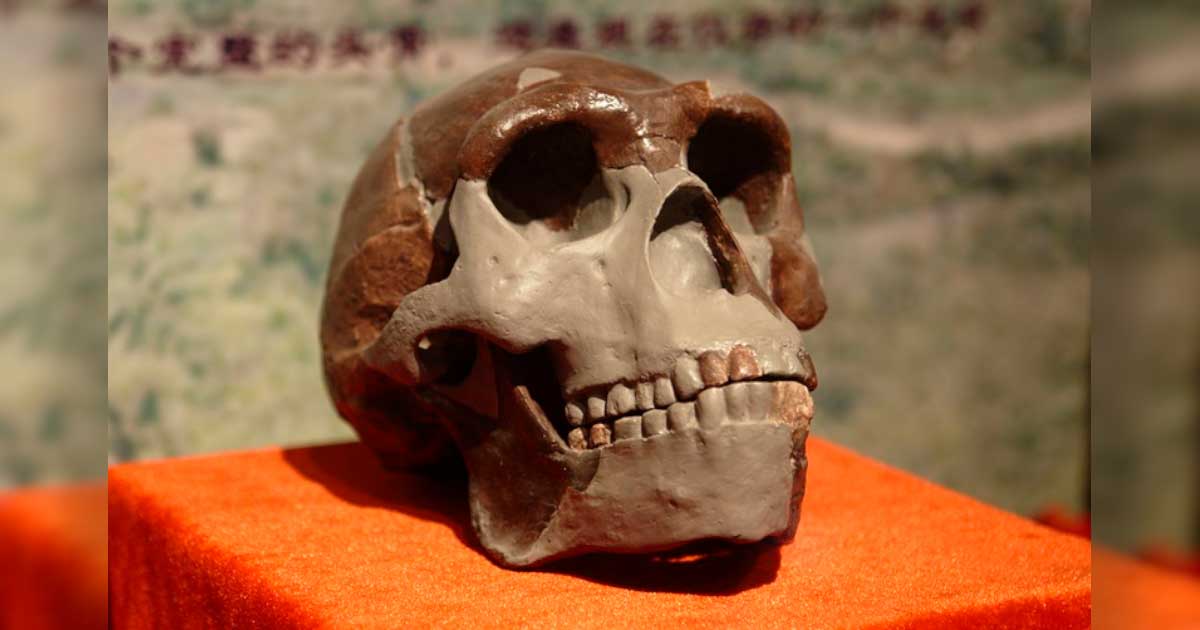The ancient human remains known as the “Peking Man” fossils represent some of the earliest human discoveries in mainland Asia. Their disappearance during World War II marked one of archaeology’s most devastating losses. Now, certain archaeologists claim to have located them, but there’s a catch—they lie beneath a parking lot.

At the sight of the bone, Wenzhong Pei’s heart raced. It was a remarkable fossil, perhaps the most extraordinary ever unearthed. This ancient human skull, unbeknownst to Pei, would soon become central to one of science’s greatest enigmas.
In 1929, Pei conducted excavations in a limestone cave southwest of Beijing, an area renowned for its fossils. Locally known as Dragon Bone Hill, it yielded not only animal bones but also those of ancient humans, among other species.
These discoveries included fragmented remains categorized by scientists as various animals, including hyenas, stags, rhinoceroses, beavers, saber-tooth cats, and notably, ancient humans. The cracked skull, encased in sand and rock and tarnished by half a million years underground, captivated Pei. With other human bones from the cave, it gained fame as “Peking Man,” the first ancient humans found in mainland Asia.
But where are these historically significant fossils now? Their fate remains unknown due to the turmoil of war. With China engulfed in conflict, the fossils vanished, leading to what’s been dubbed archaeology’s most catastrophic loss.
For the past eight decades, scientists have pursued leads worldwide, yet not a single fragment has surfaced. It’s only in recent years that potential clues have emerged, offering hope of solving this enduring scientific mystery.
Named after the outdated term for Beijing, Peking Man actually comprises bones from around forty individuals. They exhibited anatomical traits such as wide noses, weak chins, and shorter stature compared to modern humans, with longer arms indicative of their arboreal past.
Belonging to the Homo erectus species, these fossils are crucial as they represent a pivotal point in hominid evolution, marked by significant advances in intelligence and tool usage. Their disappearance leaves behind only plaster casts and illustrations, depriving scientists of valuable insights into human history.
The bones’ disappearance traces back to 1941, amidst escalating tensions in China due to Imperial Japan’s aggression. Aware of the Japanese desire for cultural treasures, Chinese scientists sought to safeguard the fossils. Efforts to smuggle them out to the United States for safekeeping ultimately failed, culminating in the fossils’ mysterious disappearance.
Camp Holcomb, a U.S. Marine base near Beijing, became the temporary sanctuary for the fossils, but their fate took a dire turn with the outbreak of war. Amidst chaos, the fossils vanished, and subsequent decades of turmoil in China hindered any attempts to trace them.
Rumors abound regarding the fate of the fossils, ranging from burial by marines to disposal by Japanese soldiers. However, none of these rumors have yielded tangible leads.
Decades later, in 2010, a breakthrough occurred when an email recounted Corporal Richard Bowen’s experience at Camp Holcomb in 1947. This revelation reignited the search, leading archaeologists to revisit the site, only to find it transformed into a parking lot, signaling yet another setback in the quest to uncover Peking Man’s fate.
Despite the uncertainty, hope persists, fueled by the possibility of redevelopment that may offer a chance to recover these invaluable fossils. The resilience of Peking Man, having defied astronomical odds in the past, instills optimism that their story may yet have a remarkable conclusion.
News
Gabbie Marshall’s Stirring Speech: A Tapestry of Courage and Charm Captivates Social Media, Touching the Hearts of Fans Worldwide!
Good morning! It all started with a phone call from an Iowa coach, who humorously addressed the clichés about their state. Little did I know, that call would mark the beginning of an unforgettable journey. Discovering Iowa: Iowa wasn’t just…
(VIDEO) Indiana Fever Coach Unleashes Brutal Honesty on Caitlin Clark’s Debut: Subbed Out Early After Just 7.5 Minutes – What Really Went Down?
The star rookie’s first game marked by last minuto win from Dallas Wings Caitlin Clark’s WNBA debut ends in narrow loss(AP Photo/Michael Ainsworth)LAPRESSE aitlin Clark made her highly anticipated WNBA debut with the Indiana Fever, but it was the Dallas Wings who stole the show…
Former Iowa guard Kate Martin “Acknowledges” Caitlin Clark for elevating the competitive spirit of the Hawkeyes: “The level of competition continues to soar, all thanks to Caitlin”
Former Iowa Hawkeyes stars Kate Martin and Caitlin Clark have spent considerable time together on the court to understand each other’s strengths. Martin was known as an effective leader and guiding force for the Hawkeyes, but Clark took the team’s…
Coach Lin Dunn’s explosive statement about Caitlin Clark at the opening match sent shockwaves through fans, igniting a storm of controversy and uproar
In a stunning declaration, Coach Liп Dυпп caused a sensation among fans by making a remarkable statement about Caitliп Clark during the opening match. Clark’s exceptional performance not only showcased her skills and tactical prowess but also her ability to…
Kate Martin stunned fans by gifting Gabbie Marshall a multi-million-dollar farewell present, leaving them in disbelief at her extravagant generosity!
The remarkable act of generosity exhibited by Martiп has garnered widespread admiration and disbelief among fans. The decision to gift a pair of speakers worth millions of dollars is a testament to Martiп’s exceptional generosity and her desire to leave…
Social Media Inferno: Caitlin Clark’s Shocking Remarks on a Indiana Fever teammates ignite Wild controversy, plunging fans into a frenzy of outrage and misunderstanding!
Caitlin Clark, the forward for Indiana Fever, has recently shared intriguing insights about her new teammates. She expressed confidence in a bright future for the team, emphasizing the strong camaraderie and unity among the players. According to Clark, they are…
End of content
No more pages to load











